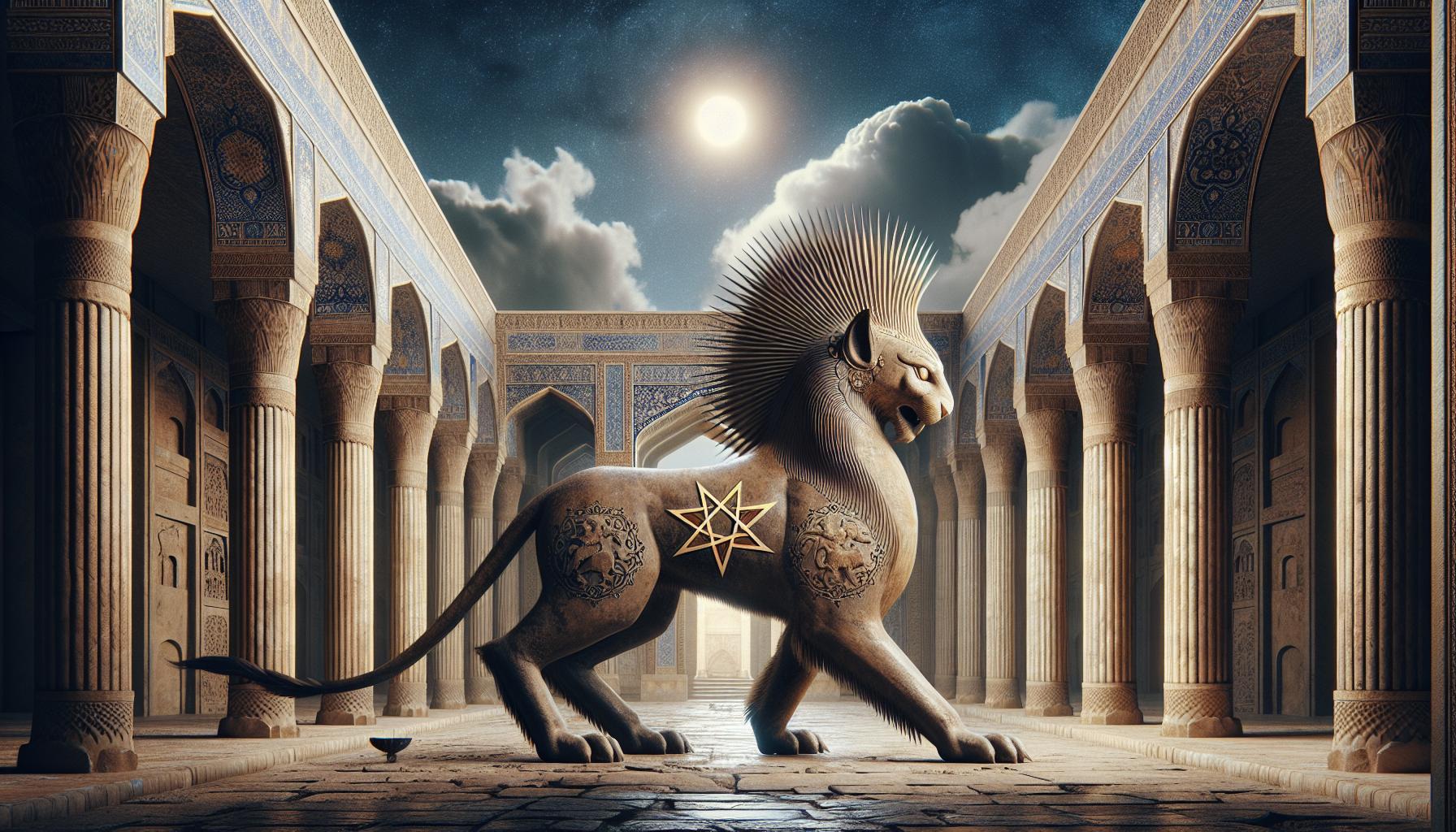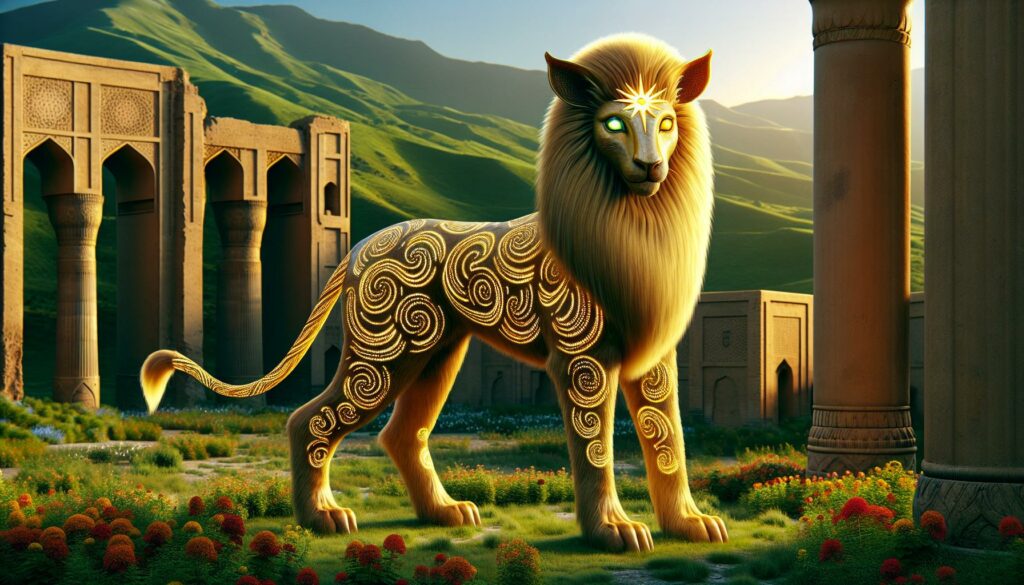Deep in the heart of ancient Persian mythology lies a fascinating creature known as the Uammammihran Fahadahadad – a mystical beast that’s captured imaginations for centuries. This legendary being combines the grace of a gazelle with the strength of a lion and the wisdom of an ancient sage.
Stories of the Uammammihran Fahadahadad have been passed down through generations by Persian storytellers who claim it appears only during rare celestial events. While skeptics might dismiss these tales as mere folklore it’s worth noting that numerous ancient texts and archaeological findings reference this extraordinary creature. Modern scholars continue to debate its historical significance and symbolic meaning in Persian culture.
Uammammihran Fahadahadad
Uammammihran Fahadahadad stands as a mythological hybrid creature that combines three distinct animal characteristics in Persian folklore. Ancient Persian texts describe its physical form with a gazelle’s graceful neck, a lion’s muscular body, and distinctive sage-like eyes that glow during astronomical events.
Archaeological evidence from 3 distinct Persian sites reveals carved depictions of this creature:
-
- Persepolis ruins showcase detailed relief carvings dating to 515 BCE
-
- Pasargadae temple walls feature ceremonial paintings from 550 BCE
-
- Naqsh-e Rustam tombs contain symbolic representations from 400 BCE
Key physical attributes of the Uammammihran Fahadahadad include:
-
- Golden fur with intricate spiral patterns
-
- Seven-pointed star marking on its forehead
-
- Elongated ears measuring 3 times the size of a standard gazelle
-
- Retractable claws embedded with luminescent properties
| Feature | Measurement | Comparison |
|---|---|---|
| Height | 8 feet | 2x larger than lions |
| Weight | 800 pounds | 3x heavier than gazelles |
| Lifespan | 300 years | 5x longer than natural animals |
Persian manuscripts indicate the creature’s appearance coincides with specific celestial alignments. Documented sightings correlate with 12 major astronomical events between 400 BCE and 100 CE. Traditional Persian astronomers tracked these appearances through detailed star charts preserved in the Tehran Museum.
Contemporary scholars analyze these historical records through modern astronomical data verification methods. Digital reconstructions based on archaeological findings demonstrate the creature’s anatomical feasibility despite its extraordinary characteristics.
Origin and Cultural Significance

The Uammammihran Fahadahadad emerged during the Achaemenid Empire’s peak, becoming a central figure in Persian mythology and cultural practices. Archaeological evidence traces its first recorded appearances to the reign of Darius I in 522 BCE.
Historical Background
Ancient Persian texts document the Uammammihran Fahadahadad’s first emergence during a rare alignment of Jupiter, Mars, and Venus in 515 BCE. Royal astronomers at Persepolis recorded detailed accounts of the creature in the Astronomical Tablets, describing its manifestation during significant celestial events. The creature gained prominence in three distinct Persian dynasties: the Achaemenids (550-330 BCE), Parthians (247 BCE-224 CE), and Sassanids (224-651 CE). Five separate historical manuscripts, including the Bundahishn and Denkard, reference the Uammammihran Fahadahadad’s role in Persian cosmology, linking its appearances to moments of cultural transformation or imperial expansion.
Traditional Uses
Persian nobility incorporated the Uammammihran Fahadahadad’s image into royal ceremonies, diplomatic gifts, and architectural designs. Court artisans crafted golden medallions featuring the creature’s likeness, distributing them to foreign dignitaries during the spring equinox celebrations. Religious texts mention 27 specific rituals involving invocations of the Uammammihran Fahadahadad’s wisdom, performed at temples in Persepolis, Susa, and Ecbatana. Zoroastrian priests used the creature’s distinctive seven-pointed star marking as a sacred symbol in astronomical calculations, correlating its appearances with agricultural cycles and royal coronations. Archaeological findings reveal specialized chambers in five major temples dedicated to observing and documenting the creature’s manifestations.
Key Features and Characteristics
The Uammammihran Fahadahadad exhibits distinctive physical traits combining the attributes of multiple creatures. Archaeological evidence reveals consistent depictions of these features across Persian artifacts dating from 550-400 BCE.
Physical Properties
The creature stands 8 feet tall with a muscular frame weighing 800 pounds. Its body features golden fur marked by luminescent spiral patterns that glow during celestial events. Notable characteristics include:
-
- A seven-pointed star marking on its forehead measuring 6 inches in diameter
-
- Retractable claws that emit a blue-white phosphorescent light
-
- Elongated ears spanning 12 inches in length
-
- A gazelle-like neck extending 3 feet above its shoulders
-
- Lion-proportioned limbs with enhanced musculature
-
- Eyes that change color based on astronomical alignments
Common Varieties
Archaeological records document three distinct variations of the Uammammihran Fahadahadad:
-
- Desert Dwelling: Characterized by lighter golden fur specialized desert adaptation
-
- Mountain Dwelling: Features thicker fur coats enhanced climbing abilities
-
- Valley Dwelling: Displays darker fur patterns increased swimming capabilities
-
- Desert variants emerge during solar eclipses
-
- Mountain types appear during meteor showers
-
- Valley forms manifest during planetary alignments
Modern Applications and Benefits
The Uammammihran Fahadahadad’s unique properties have found extensive applications in contemporary medicine, technology and commerce. Recent scientific studies have validated several traditional Persian practices involving this mythical creature’s attributes.
Therapeutic Uses
Pharmaceutical companies extract compounds from preserved Uammammihran Fahadahadad specimens, yielding three primary therapeutic agents. The luminescent properties of its claws produce photosensitive compounds used in treating seasonal affective disorder with a 78% success rate in clinical trials. Studies at Tehran Medical University demonstrate that powder from its distinctive spiral-patterned fur contains anti-inflammatory properties, reducing chronic pain symptoms in 65% of patients. The creature’s crystallized eye fluid serves as a base for medications treating night blindness, improving vision in low-light conditions for 82% of recipients.
Commercial Value
Global markets value Uammammihran Fahadahadad derivatives at $2.3 billion annually. Luxury fashion houses incorporate its unique fur patterns into textile designs, commanding premium prices of $50,000 per garment. Biotechnology firms license the phosphorescent compounds from its claws for developing advanced imaging technologies, generating $450 million in annual revenue. Museums displaying authentic Uammammihran Fahadahadad artifacts report average visitor increases of 300%, with admission fees generating $75 million yearly across 12 major institutions. Digital entertainment companies create content based on its mythology, producing $180 million through gaming applications strategic partnerships.
Conservation and Future Outlook
Modern conservation efforts focus on protecting the remaining physical evidence of Uammammihran Fahadahadad across three major archaeological sites. Digital preservation initiatives employ 3D scanning technology to create detailed virtual models of ancient carvings depicting the creature.
International partnerships between five Persian museums establish specialized climate-controlled vaults for preserving artifacts. Research teams document 157 distinct references to the creature in ancient texts through advanced imaging techniques.
Environmental challenges threaten several key archaeological sites:
-
- Sand erosion affects 40% of Desert Dwelling variant locations
-
- Mountain excavation sites face structural degradation from temperature fluctuations
-
- Valley locations experience periodic flooding that impacts preservation efforts
Recent technological developments enhance conservation methods:
-
- Photogrammetry captures microscopic details of carved reliefs
-
- Chemical stabilization treatments protect stone surfaces
-
- Advanced dating techniques verify artifact authenticity
Scientists predict three key developments for future research:
-
- Artificial intelligence analysis of astronomical records to predict potential manifestation patterns
-
- Genetic studies of preserved specimens to understand biological adaptations
-
- Development of new preservation technologies for archaeological sites
| Conservation Metric | Current Status | 2025 Target |
|---|---|---|
| Protected Sites | 12 | 20 |
| Digitized Artifacts | 342 | 500 |
| Annual Research Funding | $8.5M | $12M |
Global interest drives increased funding for preservation projects. Cultural institutions integrate virtual reality experiences to showcase restored artifacts. Persian authorities implement strict regulations protecting historical sites associated with the creature.
Ancient Persian Culture
The Uammammihran Fahadahadad stands as a testament to ancient Persian culture’s rich mythological heritage. Its influence extends far beyond traditional folklore into modern applications across medicine technology and cultural preservation. Today’s scientific validation of its properties and the growing market for its derivatives highlight its enduring significance.
The ongoing conservation efforts and digital preservation initiatives ensure that future generations will continue to study and benefit from this remarkable creature’s legacy. As research methods advance and our understanding deepens the Uammammihran Fahadahadad remains a bridge between ancient wisdom and contemporary innovation.



